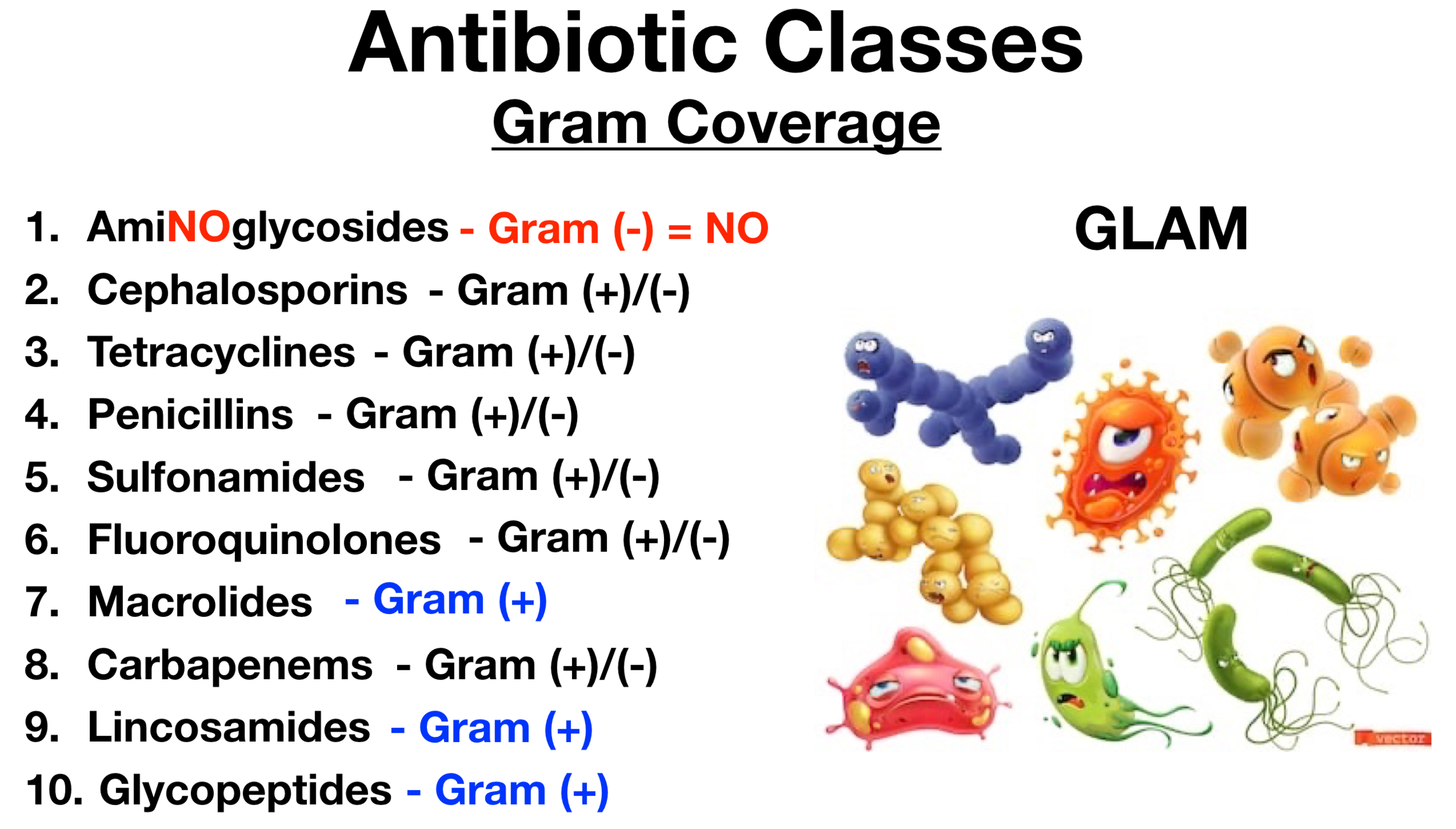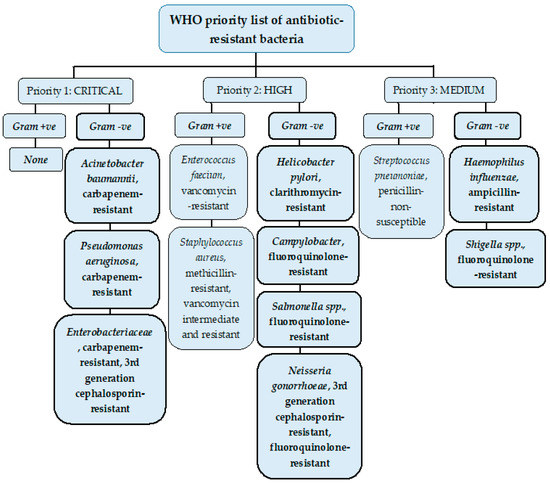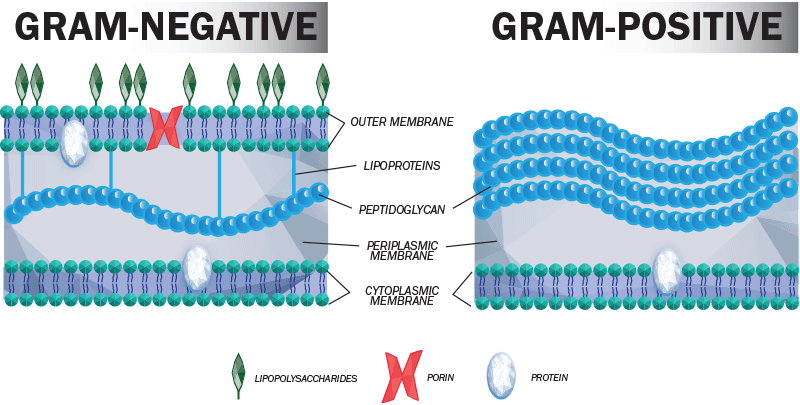Which Antibiotics Work Best on Gram-negative Bacteria
Multidrug resistance is a key factor. Experiments with modified arylomycin as an antibiotic to treat gram-negative bacteria have shown some promise in mice.

Antibiotic Class Chart Drug Name List Coverage Mechanism Of Action Mnemonic Examples Made Easy Ezmed
Gram-positive bacteria have a peptidoglycan layer on the outside of the cell wall.

. The aminoglycosides particularly gentamicin were historically the antibiotics of choice in the treatment of Gram-negative infections. 1 early empirical therapy reduced the mortality of gram-negative bacteremia. The next exciting phases of testing are in large animals and humans.
Do Gram-positive bacteria respond to antibiotics. Introduction to Gram Negative Bacteria - Last Line Antibiotic. Antibiotics are drugs taken to kill and slow the growth of bacteria.
New treatments for gram-negative bacteria are needed particularly as resistance grows to the last. Manuscript Generator Sentences Filter. Intoduction to Gram Negative Bacteria - Last Line Antibiotic Manuscript Generator Search Engine.
In general rifamycins are considered bactericidal against Gram-positive bacteria and bacteriostatic against Gram-negative bacteria a difference that has been attributed to drug uptake and not β subunit affinity 49. Gram-negative bacteria such as Acinetobacter baumannii Enterobacteriaceae and Pseudomonas aeruginosa are a rising concern for human healthGlobally gram-negative bacteria have displayed increasing resistance to carbapenem and cephalosporin antibiotics. Gram-negative bacteria are most often resistant to antibiotics as a result of the acquisition of resistant genes or gene mutation.
Relebactam is active against Gram-negative bacteria and is currently in phase 3 clinical trial in combination with imipenemcilastatin for the treatment of drug-resistant infections including infections caused by carbapenem-resistant Enterobacteriaceae 4950. Zidebactam Figure 4 is a bicyclo-acyl hydrazide DBO β-lactamase inhibitor. Studies conducted in the 1970s and 1980s among these patients have shown the following.
Other classes attack the replication cycle of the bacteria including cell division and protein synthesis needed to reproduce. Penicillin works best on gram-positive bacteria by inhibiting peptidoglycan production making the cells leaky and fragile. Gram-negative bacteria specifically gram-negative rods GNRs are ubiquitous microorganisms that commonly feature a lipopolysaccharide-adorned outer membrane a narrow peptidoglycan layer and an inner membrane that effectively serve as permeability barriers to exogenous chemicals including antibiotics GNRs acquire a variety of resistance traits via horizontal.
Gram-Negative Bacteria Health and wellness professionals who understand the difference between Gram-positive and Gram-negative bacteria are better equipped to interpret and utilize high-quality essential oil and herbal medicine research. After all one of the best ways to fight Gram-positive and Gram-negative bacterial. Gram-positive bacteria retain the colour of the dye whilst Gram-negative bacteria do not and are instead coloured red or pinkGram-negative bacteria are more resistant to antibodies and antibiotics than Gram-positive bacteria because they have a largely impermeable cell wall.
This second outer membrane of Gram-negative bacteria is an effective barrier regulating the passage of large molecules such as antibiotics into the cell. A survey of the epidemiology of resistance in the major Gram-negative species Escherichia coli Klebsiella Acinetobacter and Pseudomonas shows that there is significant. In Gram-positive bacteria the cell wall has a thick peptidoglycan layer which is relatively porous allowing substances to pass through it quite easily.
Therapeutic control of beta-lactamase-producing bacteria has been a major clinical problem in the past 40 years. For example all penicillin-class antibiotics ampicillin amoxicillin block the formation of the external cell wall of the bacteria. In fact no new classes of Gram-negative-killing drugs have come to market in nearly 30 years.
However some Gram-negative bacteria encountered in the burn unit are now resistant to all the aforementioned antibiotic classes and often the treatment option is relegated older drug classes namely the polymyxins. Studies have shown that newly developed antibiotics will. This is the first antibiotic that can target Gram-positives and Gram-negatives without resistance said Zemer Gitai Princeton.
Gram-negative bacterial infections are associated with high morbidity and mortality due to limited therapeutic options. Discover the differences between bactericidal bacteriostatic narrow-spectrum and. 2 therapy with a combination of two antibiotics be it an extended spectrum penicillin plus an aminoglycoside or a third-generation cephalosporin has significantly improved patients outcomes.
Gram-negative bacteria have peptidoglycan between membranes. The key difference is that Gram-negative bacteria are armored with an outer layer that shrugs off most antibiotics.

Molecules Free Full Text Resistance Of Gram Negative Bacteria To Current Antibacterial Agents And Approaches To Resolve It Html

Why Are Gram Negative Bacteria Resistant To Antibiotics By Alpana And Murari Chaudhuri The Biochemists Medium

Antibiotics Used For Gram Positive And Gram Negative Bacteria With Its Download Scientific Diagram
Comments
Post a Comment